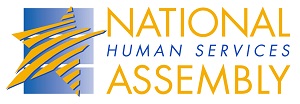Special to the Philanthropy Journal
By Lee Sherman
Building family well-being and maintaining it across the lifespan is one of the most powerful ways that we can ensure everyone reaches their potential and is able to fully contribute to our communities. Research has shown that the Two-Generation (Two-Gen) approach builds well-being by working with families to create a solid and stable foundation through integrated, intensive, and high-quality services focusing on early childhood learning, elementary education, economic stability, and family engagement. Undoubtedly, our communities can largely benefit from a more strategic and direct approach to Two-Gen policy and practice at both the state and local levels.
Human service practitioners at the state and local levels have the opportunity to leverage the economic efficiencies of the Two-Gen approach to maximize every public dollar, and to close gaps within systems that were not designed to communicate with one another. Given finite funding, we often wrestle with difficult policy choices, such as determining the criteria for which families will receive federally-supported child care subsidies. At the same time, enrollment information for complementary services like SNAP, Medicaid, and behavioral health may be administered by three separate state agencies and delivered through three different local service providers, all of which lack inherent cross-entity data-sharing mechanisms.
 The theory behind Two-Gen is not new, but state-level policymakers often encounter practical challenges when pursuing the strategy comprehensively and statewide. Two-Gen is premised on the idea that the net benefit of programs serving low-income families increases when delivered in a simultaneous and reinforcing way. For example, if supports provided to parents, like employment services, are intentionally linked with supports for the child in that family, like high-quality early-learning programs, then the likelihood that both generations of that family will attain long-term positive outcomes and reach their full potential increases significantly.
The theory behind Two-Gen is not new, but state-level policymakers often encounter practical challenges when pursuing the strategy comprehensively and statewide. Two-Gen is premised on the idea that the net benefit of programs serving low-income families increases when delivered in a simultaneous and reinforcing way. For example, if supports provided to parents, like employment services, are intentionally linked with supports for the child in that family, like high-quality early-learning programs, then the likelihood that both generations of that family will attain long-term positive outcomes and reach their full potential increases significantly.
Research into the Two-Gen implementation process across three states illustrates how many practitioners and policymakers at the state level have tackled these challenges. Colorado, Connecticut, and Utah are in the vanguard of state implementation, developing innovative solutions to the structural barriers and challenges that have traditionally kept services for children and adults in silos.
The initiatives of Colorado, Connecticut, and Utah contribute to the field’s understanding of how to best translate support for the Two-Gen approach into tangible solutions that fundamentally transform state policies, systems, and programs. Examples include the Colorado Department of Human Services establishing a “Two-Gen Manager” to coordinate communication and data-sharing across department offices. In Utah, Next Generation Kids has provided families with community-based early education, employment skills training, and in-home visiting as part of an intensive demonstration project. Connecticut is undertaking a similar Two-Gen pilot project across six communities, with initial outcome measures to be reported in 2017.
From these examples, other states can take advantage of lessons learned and strategize to adopt similar approaches to gain success, including:
- Cultivating champions of the Two-Gen approach in the state legislature and executive cabinet;
- Developing unique ways to share data within and across state agencies to increase program efficiency;
- Identifying populations within the state who share the potential to maximize the outcomes of Two-Gen program delivery;
- Involving families in program design to ensure that services are tailored to the values and unique needs of each community; and
- Ensuring program sustainability by building opportunities for long-term systems change into Two-Gen policies and programs.
A fully-realized Two-Gen strategy to reduce poverty and increase well-being happens on a continuum, and takes time. We, as human service providers, have a duty to convey that message to state policymakers. The strategies employed in these three states demonstrate that implementing Two-Gen system change is in fact a viable, long-term approach to better outcomes for families.
States like Tennessee and Oklahoma that have already shown a commitment to the Two-Gen approach have the opportunity to learn from Colorado, Connecticut, and Utah when engaging stakeholders inside and outside their states in an effort to shift thinking toward more efficient, solution-oriented services. The lessons learned and insights shared can provide advocates in other states with the tools and resolve to continue pursuing their Two-Gen goals.
Lee Sherman is the President & CEO of the National Human Services Assembly
The National Human Services Assembly (the Assembly) is a Washington, DC-based association comprised of over 75 of the largest national nonprofit organizations. In aggregate, members and their affiliates and local service networks collectively touch, or are touched by, nearly every household in America—as consumers, donors, or volunteers. The Assembly focuses on strengthening the human service sector through shaping public dialogue, capacity building, collaboration, and improving nonprofit business practices.





